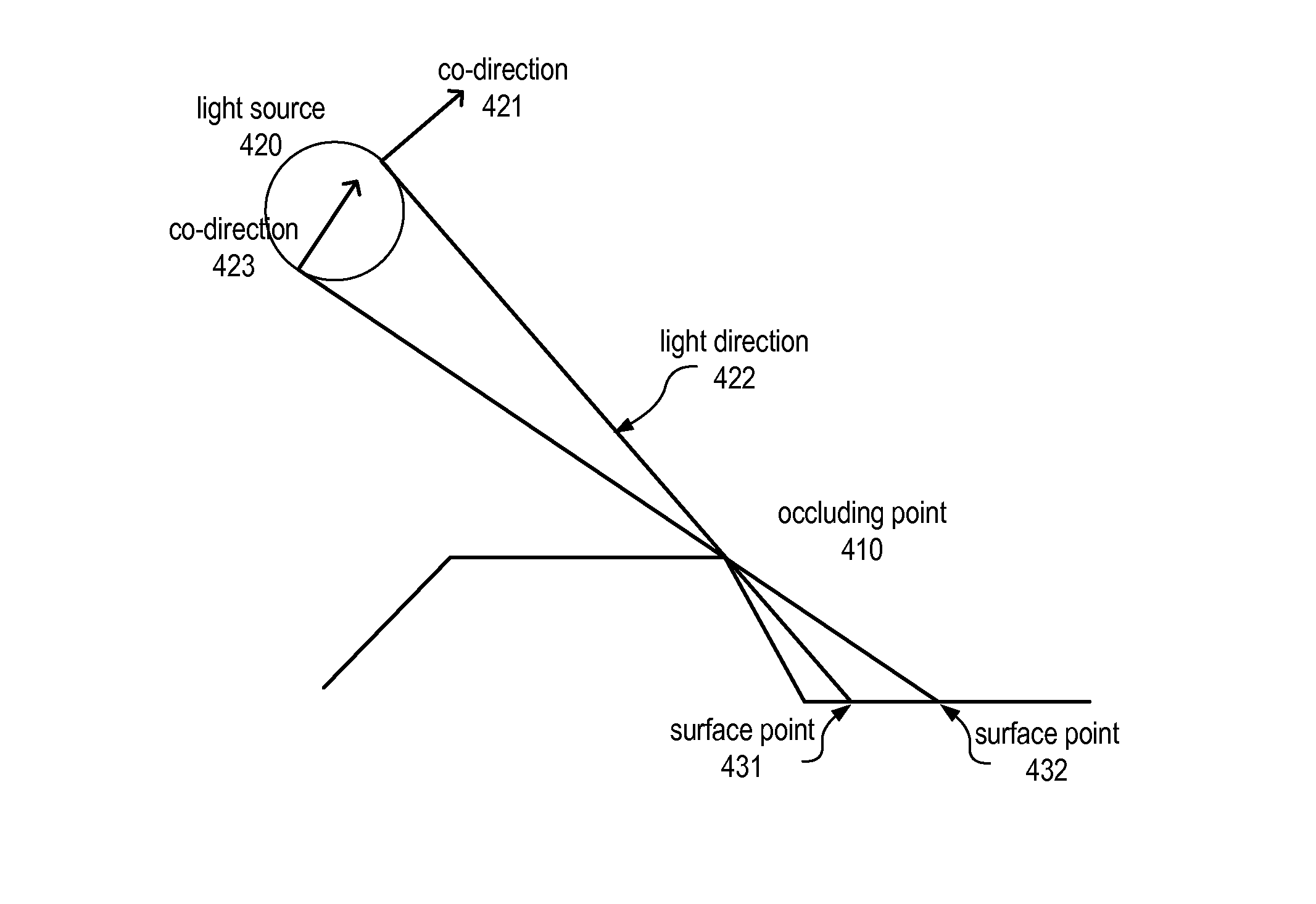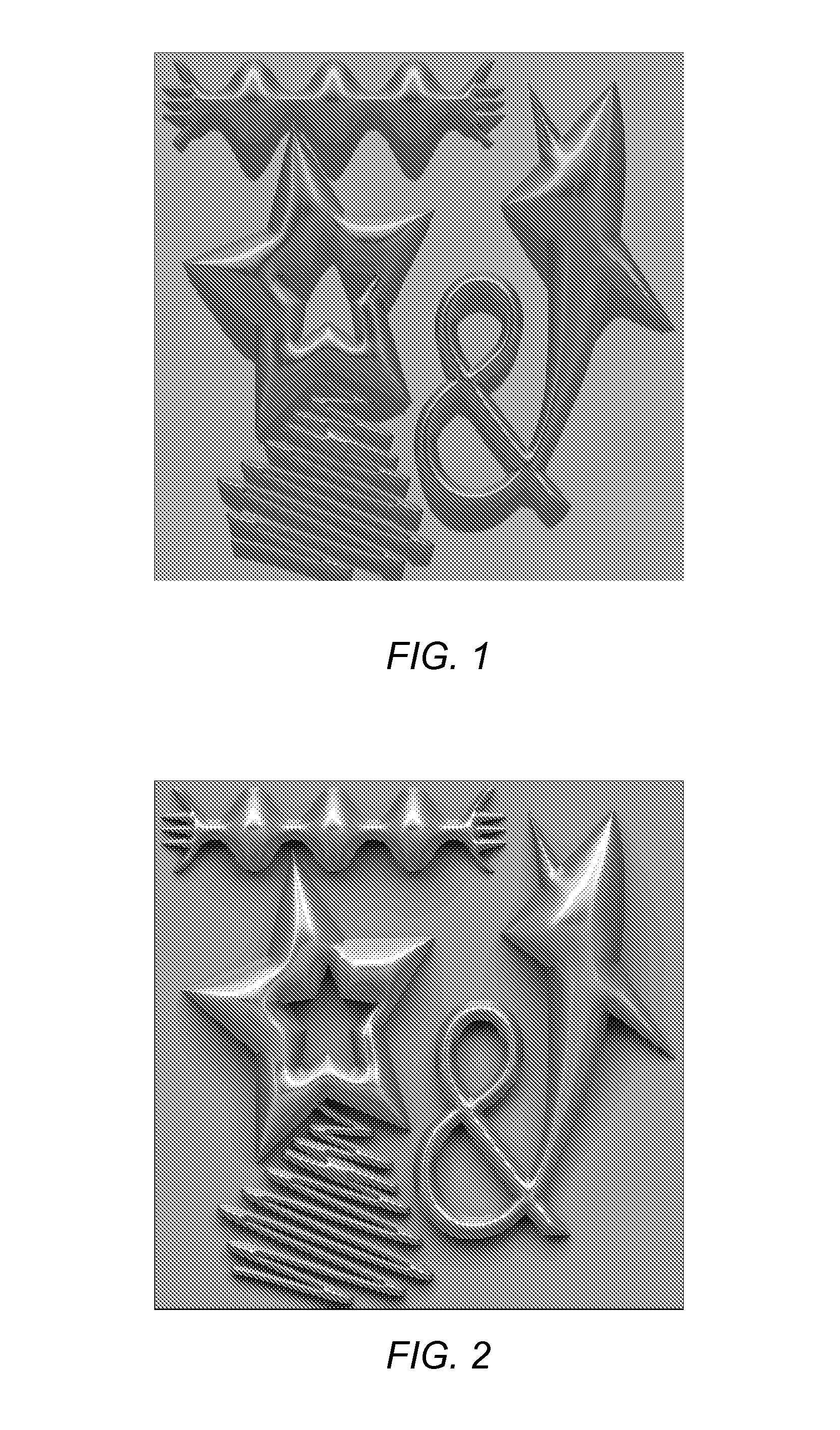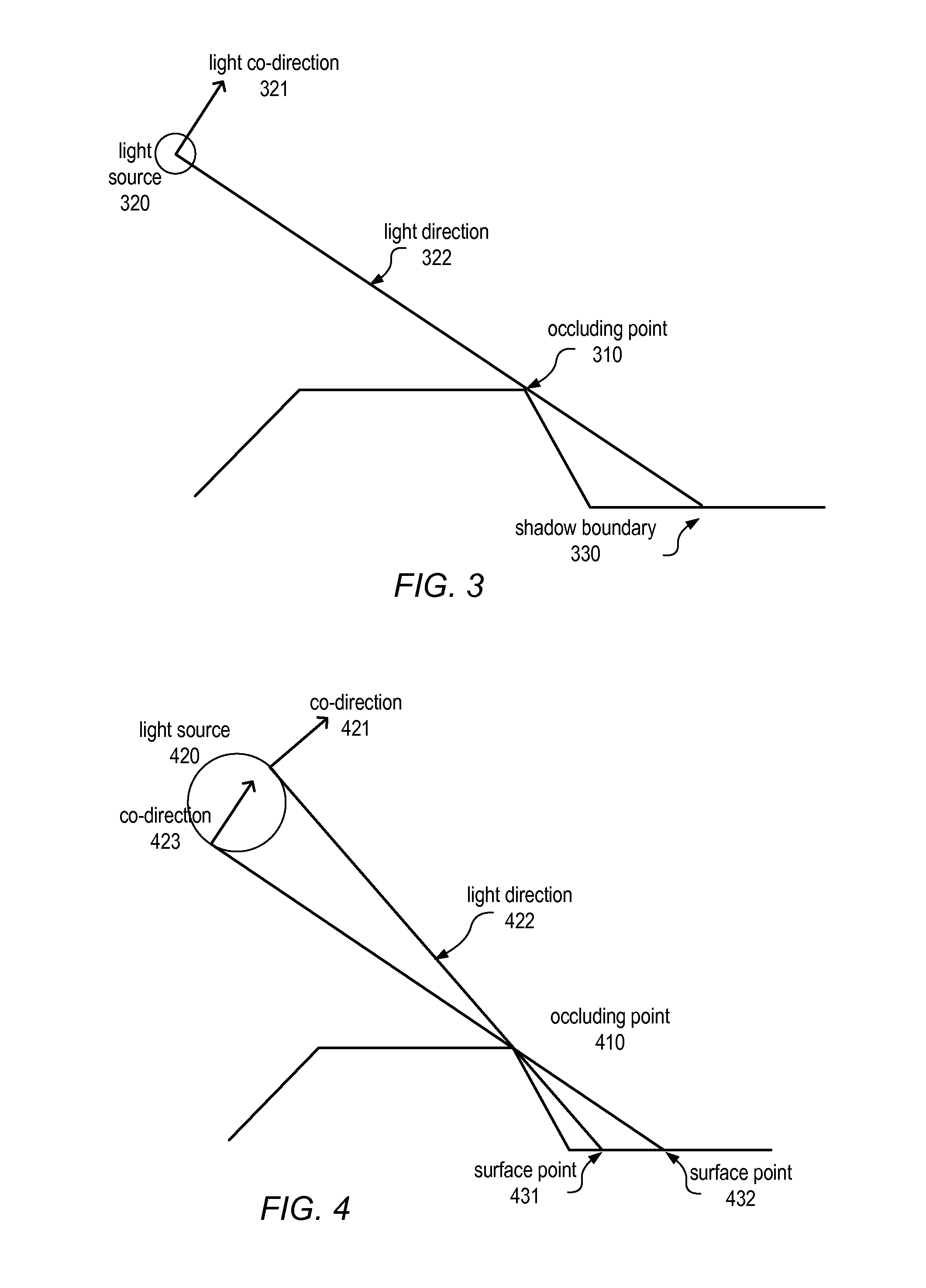System and methods for rendering height-field images with hard and soft shadows
a technology of heightfield and image, applied in the field of system and methods for rendering heightfield images, can solve the problems of large number of rays, computational complexity and high cost of rendering 3d graphics with sophisticated lighting effects, such as area light sources, and achieve the effect of facilitating a simple 2d workflow and fast rendering of images
- Summary
- Abstract
- Description
- Claims
- Application Information
AI Technical Summary
Benefits of technology
Problems solved by technology
Method used
Image
Examples
Embodiment Construction
[0026]Various embodiments of systems and methods for implementing scan-coherent techniques for computing hard and soft shadows from height-fields that contain depth discontinuities are disclosed. The results may be computed efficiently and may be free of aliasing artifacts. Various embodiments may include an extension of 2D occlusion priority models to 2.5D shading and rendering, which may create a novel hybrid of graphic design concepts with sophisticated lighting effects.
[0027]Previous techniques used for rendering height-field images include ray-tracing and multi-pass rasterization for large numbers of individual light sources. However, neither technique supports a straightforward implementation of the occlusion model, and neither would be very efficient at final rendering if they included such a model. For example ray-tracing would require a large number of rays to achieve equivalent quality soft shadows, and rasterization methods would require constructive solid geometry (CSG) ...
PUM
 Login to View More
Login to View More Abstract
Description
Claims
Application Information
 Login to View More
Login to View More - R&D
- Intellectual Property
- Life Sciences
- Materials
- Tech Scout
- Unparalleled Data Quality
- Higher Quality Content
- 60% Fewer Hallucinations
Browse by: Latest US Patents, China's latest patents, Technical Efficacy Thesaurus, Application Domain, Technology Topic, Popular Technical Reports.
© 2025 PatSnap. All rights reserved.Legal|Privacy policy|Modern Slavery Act Transparency Statement|Sitemap|About US| Contact US: help@patsnap.com



